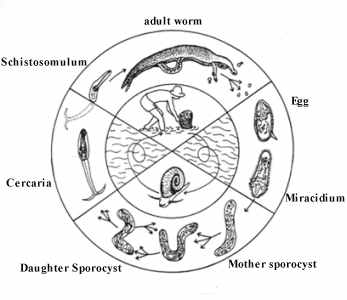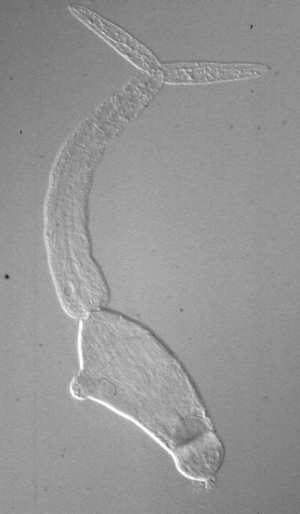
Lifecycle of Schistosoma mansoni (HAAS, 1985)

Lifecycle of Schistosoma mansoni (HAAS, 1985) |
Schistosomiasis (Bilharziosis, Bilharziose) is the second most important tropical parasitic disease of man (after Malaria), 200 million people are infected. Humans are actively invaded by the waterliving cercariae of the parasite, which are emitted from water snails. The snails are actively invaded by miracidia, which originate from eggs, released from the human hosts into the water. Presently we maintain the life cycles of 3 strains of Schistosoma mansoni in the laboratory using white mice as final hosts; 2 strains from Belo Horizonte (Brazil) via 2 Biomphalaria glabrata snail strains and one strain from Egypt via Biomphalaria alexandrina as its snail host. We have analysed, how the cercariae of 5 schistosomatid species find and recognize their hosts, and how the miracidia of 3 species find their snail intermediate hosts. There seem to be chances for the development of novel specific methods for a control of the infective larvae.
 S. mansoni cercariae, © T. Loy |